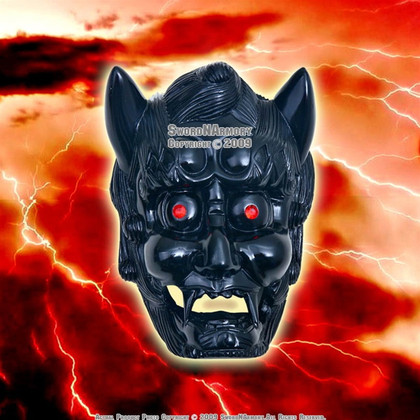What the Japanese Kami Mask Represents?
Posted by Sword N Armory on Jan 20th 2020
Kami means diety or dieties in ancient indigenous Japanese Shinto religion. For the most part, these Japanese Kami masks were designed to represent the variety of Gods within the religion. They were used in ancient Japanese theater (Mizayaki, Kabuki, Kagura dance traditional), as samurai masks to strike fear in the hearts of enemies, worn in representation of memorials, during harvest time festivals, and hung in homes for elaborate decorations with a unique and wonderful story behind each.
Forming in the 8th century A.D. and starting as a set of native beliefs and mythology,Shinto or ("way of the Gods") stems from the Chinese Shendao which usage goes as far back as the second half of the 6th century A.D. Eighty percent of modern Japanese identify themselves as practitioners of Shinto. Yet, this belief system has no official organizational structure. The Kami have representation much like Greek or Roman mythology including The Sun, War, mankind, womankind, wisdom, the earth, celestial bodies and the oceans.
The Samurai often wore helmets designed to represent the Kami of death, war, and mankind. This symbolized to potential enemies their personal prowess on the battlefield. And, since Samurai were leaders on the battlefield, only they were permitted by their Emporer's and empress' to wear these uniquely-crafted headgear.
Among the first known rituals in Shinto culture was the Niinamesai, where the Emporer of the province would offer rice to the Kami in hopes of blessing come Harvest times. Niinamesai often featured a feast with the Kami and then with the Emporer's honored guests. This feast has been recorded to once last as long as two whole days.
Kami masks representing each Kami individually have been used in ancient performance theater. These grand performances were intricate and well-performed, honoring the Kami as a form of prayer and worship. Only men were allowed to wear these masks during the performance. Theaters were filled with attendees numbering in the hundreds and even thousands, so performances were given quite often.
Kami masks were also designed by numerous talented artists to be hung in individual homes as a sign of successful wealth and health. They were even shrines to be worshipped for blessings and good health, and they made such wonderful decorative pieces, too.
The history and culture of Japan is so wonderful and colorful, as Shinto is its most ancient beliefs of the masses still today. The Kami and their representations (Masks) are a critical part of Japan's modern culture and society.












